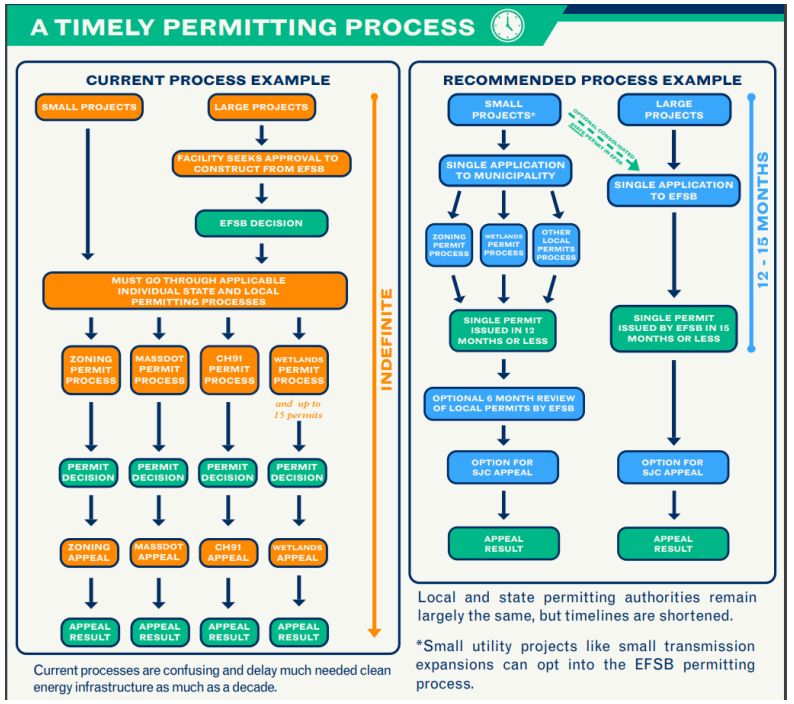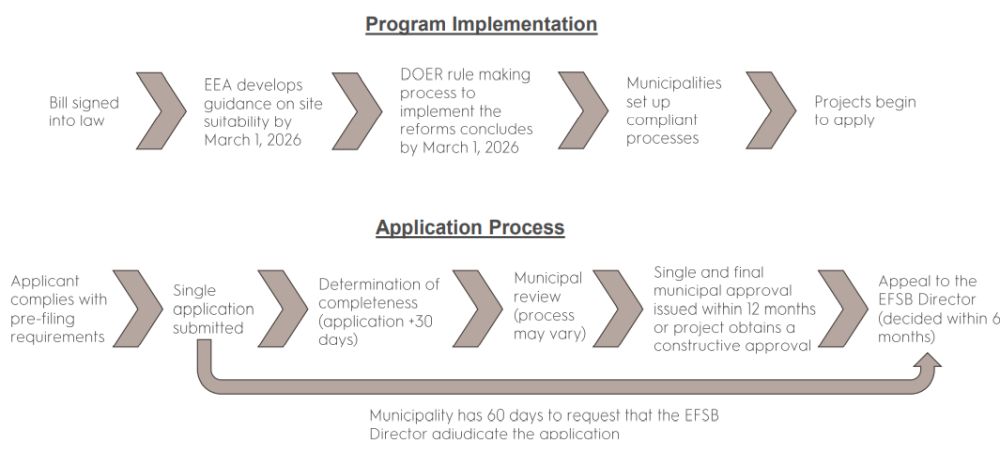Zachary Gerson’s articles from Foley Hoag LLP are most popular:
- in Asia
- in Asia
Foley Hoag LLP are most popular:
- within Media, Telecoms, IT and Entertainment topic(s)
Agenda for Today
- Brief Background on Permitting and Siting Reform
- Key Timelines and the Importance of Engagement
- Permitting and Siting Reform Implementation (per Senate, No.
2967)
- Executive office of Energy and Environmental Affairs ("EEA") guidance process
- The new processes for siting and permitting small projects ⁃ The new process for siting and permitting large projects
- Other significant changes
- Changes to Massachusetts Procurement Authorities
- Energy Storage Procurement ("Section 83E")
- Regional Clean Energy Generation Procurement ("Section 82")
- Note – We are not covering everything in this bill!
Background: Why are we getting reform now?
- Frustration has been growing with current siting and permitting
process, including:
- Worries that long and uncertain timelines for siting and permitting of energy infrastructure (along with duplicative burdens) were increasingly a threat to meeting the Commonwealth's goals for clean energy;
- Realization of gaps for siting authority over energy storage projects (May 2023 EFSB Decisions in Cranberry Point and Medway Grid);
- Concerns that existing processes were not satisfactory for community and municipal participation; and ⁃ Desires to incorporate equity and environmental justice more explicitly in siting processes.
- In Sept. 2023, Governor Healey established a Commission on
Energy Infrastructure Siting and Permitting.
- That Commission produced a report in March 2024 recommending specific changes.
- Legislation has largely followed the core themes of those recommendations.
Background: Core Purpose of Reforms
- Consolidate siting and permitting processes at the state and local level into fewer, more streamlined processes: i.e., one EFSB approval at the state level for "large" projects and a single municipal approval for "small" projects
- Establish binding timelines
- Make sure these processes allow for effective community engagement
- Provide more support to municipalities and other stakeholders for the siting and permitting process

Key Timelines (a busy year ahead)

Permitting and Siting Reform: EEA Processes
- The Bill tasks EEA with creating guidance on some of the more difficult aspects of the permitting and siting reform.
- An "office of environmental justice and equity" is
formally created and tasked with working with stakeholders to
develop standards and guidelines governing the potential use and
applicability of:
- community benefit plans and agreements; and
- cumulative impact analyses in developing energy infrastructure
- EEA is also directed to:
- establish and periodically update a methodology for determining the suitability of sites for clean energy generation facilities, clean energy storage facilities and clean transmission and distribution infrastructure facilities in newly established public rights of way. The methodology shall include multiple geospatial screening criteria to evaluate sites for: (i) development potential; (ii) climate change resilience; (iii) carbon storage and sequestration; (iv) biodiversity; and (v) social and environmental benefits and burdens. The executive office shall require facility development project proponents to avoid or minimize or, if impacts cannot be avoided or minimized, mitigate siting impacts and environmental and land use concerns.
- develop and periodically update guidance to inform state, regional and local regulations, ordinances, by-laws and permitting processes on ways to avoid, minimize or mitigate impacts on the environment and people to the greatest extent practicable.
- EEA's methodology for determining site suitability will be taken into account by both DOER's standards and requirements for siting and permitting small clean energy facilities and the EFSB's criteria governing siting and permitting for large clean energy facilities.
- EEA's cumulative impacts analysis guidance will be incorporated into requirements for large clean energy facilities that seek approvals from the EFSB.
Siting and Permitting Small Projects
- Siting and permitting for "small" projects is
consolidated, but kept at the local level in the first instance.
- "Small clean energy generation facilities" are solar, anaerobic digestion, or wind facilities with less than 25 MW of capacity.
- "Small" clean energy storage facilities are ESS with a rated capacity of less than 100 MW hours.
- "Small clean transmission and distribution" facilities have a more detailed but flexible definition.
- The Bill creates a new division within DOER, the "division of clean energy siting and permitting," which is charged with establishing "standard conditions, criteria and requirements for the siting and permitting of small clean energy infrastructure facilities by local governments."
- DOER, in consultation with other agencies, is to issue regulations implementing this process by March 1, 2026.
- DOER's standards, requirements and procedures must include
specific elements:
- Uniform sets of public health, safety, environmental and other standards, including zoning criteria, that local governments shall require for the issuance of permits for small clean energy facilities;
- a common standard application;
- Uniform pre-filing requirements, including specific requirements for public meetings and other forms of outreach that must occur in advance of an applicant submitting an application;
- standards for applying site suitability guidance developed by the executive office of energy and environmental affairs, which are to include a mitigation hierarchy to be applied during the permitting process to avoid or minimize or, if impacts cannot be avoided or minimized, mitigate negative impacts of siting on the environment, people and the commonwealth's goals and objectives for climate mitigation, resilience, biodiversity and protection of natural and working lands, to the extent practicable;
- Means of handling constructive approvals resulting from timing requirements -- common conditions and requirements for a single permit consolidating all necessary local approvals to be issued for different types of small clean energy infrastructure facilities;
- guidance for procedures and potential extensions of time should an applicant fail to respond to a request for information within a specified timeframe or proposes a significant revision to a proposed project; and
- responsible parties subject to enforcement actions, including in the event of sale of small clean energy infrastructure facilities after permitting.
- The Bill, and DOER's implementing regulations, will set up
a process with a single application that results in a single local
approval for a project within 12 months.
- Compliance with established pre-filing and outreach requirements.
- Application is filed with local government authority.
- Application completeness determined within 30 days.
- A municipality could have separate boards, commissions, etc. run their own processes, as long as there is a single final decision that incorporates them all.
- Approval covering all local decisions necessary for a project to proceed must be issued within 12 months, or there is a constructive approval using common conditions established by DOER.
- The consolidated decision is the only appealable decision from the local level, and it can be appealed to the Director of the EFSB for a de novo adjudication (a fresh look), which must be decided within six months.
- A municipality lacking resources can elect to have the EFSB Director conduct the review in the first instance.
- Applications must include certifications and disclosures related to workforce and labor practices, including wage bonds – these requirements are potentially onerous and out of place.
- Local governments acting in accordance with DOER's standards will be considered to be acting consistently with G.L. c. 40A, § 3 (which limits restrictions that can be applied through zoning).

To view the full article click here.
The content of this article is intended to provide a general guide to the subject matter. Specialist advice should be sought about your specific circumstances.


